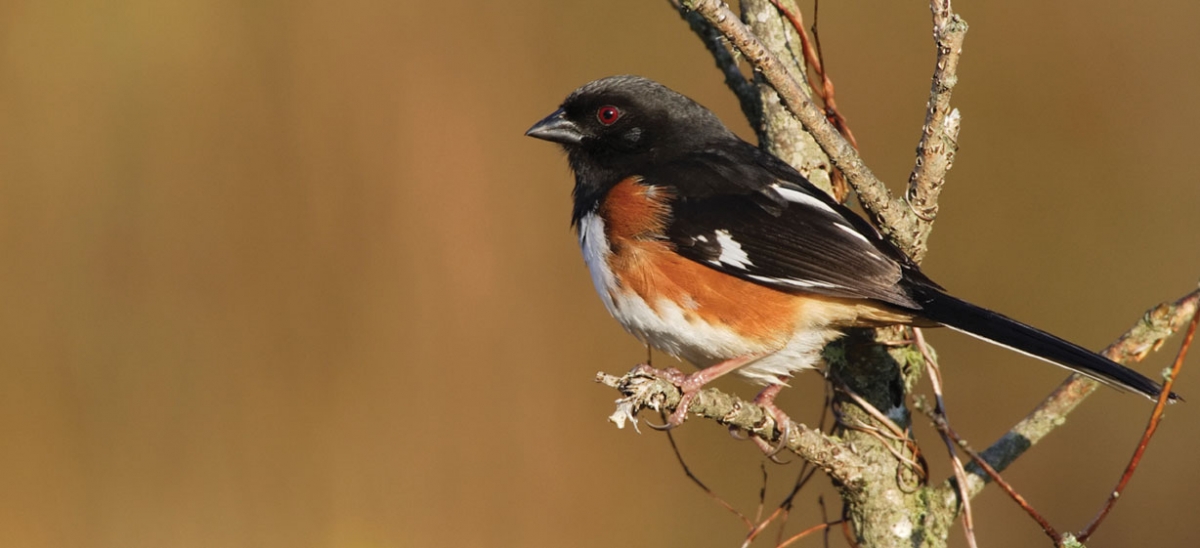
Walk to the trailhead behind the Audubon Society’s Beechwood Farms nature center on Dorseyville Road, and you’ll briefly head down toward the meadow and then uphill, west, toward the upper fields. Stroll beneath the canopy of older trees until you reach the clearings. Look up, look low and listen. That black, white, and rufous bird singing with its head thrown back in spring abandon? That scratching in last fall’s leaf litter? That brilliant, unfamiliar song? The eastern towhee, returned north, awaits your discovery.
The eastern towhee is generally migratory, though every year a handful are found in the Pittsburgh region by Christmas bird counters. A relative of the sparrow, but more similar in size to the American robin, the towhee is a skulker, finding meals through a choreographed hop forward, scratch backward, and quick review of the bounty of the brushy forest floor. Beetles, ants, centipedes and other small critters make tasty meals in spring and summer. In winter, seeds and berries will do.
This is a bird colored to blend into the undergrowth. A black head, wings and tail allow it to disappear into shadows. Flanks the same rusty red of a robin create a wash of color in the open but mix into leaves and grasses as the towhee hops about for its meals. A white chest and belly and a white patch of feathers at the wrist and edges of its tail create a flash of light before it settles and is swallowed back into a thicket.
At Beechwood and across western Pennsylvania each spring, male towhees will sing from high perches to define and defend territory. They sing a fantastic song that sounds to some like they’re exhorting us: “Drink your tea.” The last syllable includes a trill that ripples across the woods each spring. No spring of birding is complete without it. A vernal walk along Beechwood’s upper fields or Spring Hollow Trail, brushy as they are, almost guarantees a sighting. Look for the bird’s red eye if you get an unobstructed view. Towhees down south have white eyes; northern birds have the red eye familiar to us. Who knows why? Song sung, tea tippled, the male towhee finds a partner, colored much the same below, though the female is brown on her head and back, the better to sit unseen on her ground-built nest. Females lay a clutch of white to gray-brown speckled eggs. Two weeks of nonstop incubation, and the chicks hatch.
In my interactions with towhees at Beechwood, I have been able to watch them up close as they forage. They seem unruffled by a binocular-toting human intruding on their meals, far more intent on finding a morsel to munch. Often I hear them before I see them, nasal “chewink” call notes ringing from the shadows like a sonar ping from a submarine in the wine-dark sea. It’s fun to stalk them, listening with care for their tiny talons scraping at the soil. Take the time to seek out the towhee this spring.
The Audubon Society of Western Pennsylvania includes Beechwood Farms in Fox Chapel, Todd Sanctuary near Sarver, and the Succop Conservancy in Butler. All properties are open to the public, but an inexpensive ASWP membership supports environmental education and birding for all.


